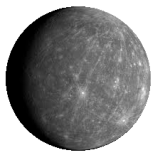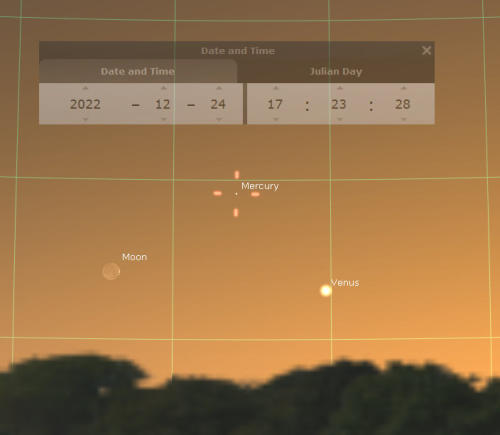Mercury
is
one
of
four
so-called
terrestrial
planets
in
our
solar
system.
Mercury
is
essentially
a
dead
rock
orbiting
the
Sun.
It
is
a
very
different
type
of
planet
than
Earth
.
After
a
period
of
cratering,
the
interior
cooled
rather
quickly.
It
is
heavily
cratered
and
does
not
have
the
large,
flat
maria
which
are
common
on
the
Moon's
Nearside.
The
features
on
Mercury
are
named
after
artists,
poets
and
musicians.
It
has
nothing
to
speak
of
in
the
way
of
atmosphere
,
it
appears
to
be
geologically
inactive,
and
because
of
its
proximity
to
the
Sun,
its
surface
temperature
is
almost
high
enough
to
melt
some
metals.
Mercury's
iron
core
seems
to
be
rather
large
for
such
a
small
sized
planet.
This
gives
the
planet
a
relatively
high
overall
density.
The
spin-orbit
coupling
of
this
planet
is
interesting.
This causes the same side of Mercury to face the Sun on every other orbit.
This
coming
December
24th
will
be
a
unique
opportunity
to
observe
Mercury
near
Venus
and
the
Moon.
In
general,
it
is
difficult to get a glimpse of Mercury. How does one succeed in their quest to observe the inner-most planet?
Observing Mercury


















































